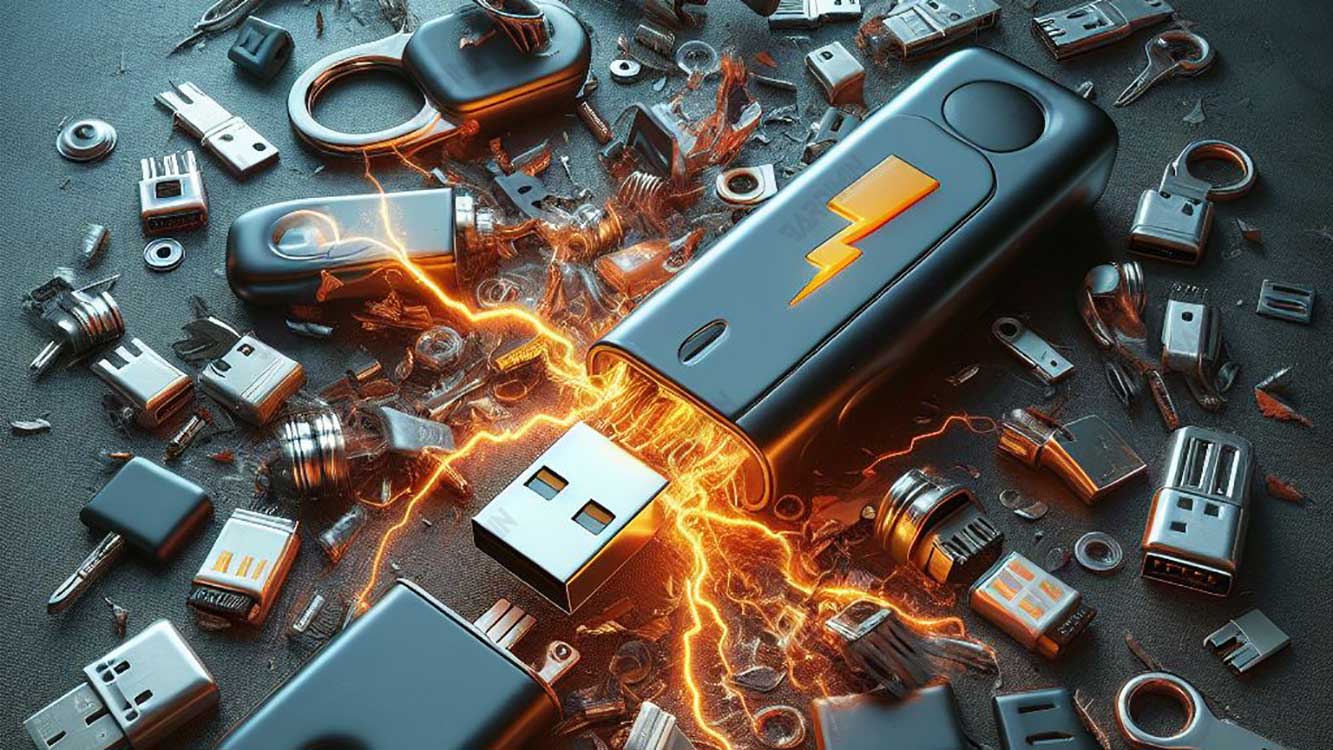Flash drives have become an irreplaceable storage tool in our daily lives. However, what happens when this little tool breaks down? Data loss can be a nightmare, especially if it contains important files.
This article will discuss smart ways to repair a corrupted flash drive without having to format it, so you can save your data without losing valuable information.

Recognize the Problem
Before we get into the solution, it is important to identify the type of damage experienced by your flash drive. Damage can be physical, such as broken or damaged components, or it can be software, such as file system corruption.
Signs of physical damage to a flash drive
- Not Detected: The flash drive does not appear at all when connected to a computer or other device.
- Visible Damage: The presence of visible physical damage to the flash drive, such as cracks, fractures, or detached components.
- Connection Problems: Flash drives are detected but often disconnect or cannot perform data transfer stably.
- Overheating: Flash drives get very hot during use, which can be an indication of damage to internal components.
- Burning Odor: There is a burning odor that indicates damage to the internal circuit.
If you experience one or more of the above signs, it is recommended to immediately stop using the flash drive to prevent further damage and data loss. Next, you can try using data recovery methods or take the flash drive to a professional service center for diagnosis and repair.
Signs of flash drive software malfunction:
Software damage to a flash drive is usually related to problems with the file system or software that governs the operation of the flash drive.
Here are some signs of a software malfunction on a flash drive:
- Error Accessing: An error message appears when trying to access or open the flash drive.
- Unreadable File: Files that are on the flash drive cannot be opened or appear corrupted.
- Capacity Not Matching: The storage capacity shown does not match the actual capacity.
- Files and Folders Missing: Files and folders that previously existed suddenly disappear for no apparent reason.
- File System Not Recognized: The operating system requested to format the flash drive because the file system was not recognized.
If you experience these problems, there are several steps you can try before deciding to format the flash drive, such as using data recovery tools or certain commands via Command Prompt to repair damaged file systems.
Repair Steps Without Formatting
After identifying the problem, here are the steps you can follow to fix the flash drive without formatting:
1. Use the Error Checking Windows Feature
Windows provides an Error Checking feature that can check and fix problems with flash drives.
How to Use Error Checking:
- Go to This PC and right-click on your flash drive.
- Select Properties and navigate to the Tools tab.
- Click Check under Error checking.
- Follow the instructions to begin the inspection and repair.
2. Run the chkdsk command
The CHKDSK command in Command Prompt can be used to repair a corrupted file system.
How to Run CHKDSK:
- Open Command Prompt as administrator.
- Type chkdsk X: /f (replace X with the drive letter of your flash drive).
- Press Enter and wait for the process to complete.
3. Check Flash Drive Health with Special Software
Software like CrystalDiskInfo can help you check the health of a flash drive and determine if there are any damaged sectors.
How to Use CrystalDiskInfo:
- Download and install CrystalDiskInfo.
- Run the software and select your flash drive.
- Check the health status displayed by the software.
4. Make Use of Data Recovery Software
Use data recovery software such as Recuva or EaseUS Data Recovery Wizard to recover lost or damaged files.
How to Use Data Recovery Software:
- Download and install data recovery software.
- Run the software and select your flash drive.
- Follow the steps provided by the software to start data recovery.
5. Check with Disk Management
Disk Management can help you check the partition and format of a flash drive without formatting.
How to Use Disk Management:
- Open Disk Management by right-clicking on Start and selecting Disk Management.
- Find your flash drive and check its status.
- If there is a problem, right-click it and select Change Drive Letter and Paths or Format to change it without deleting the data.

